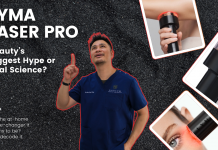It’s all in the eyes. When our canine companion comes begging for food at the table, we will (or at least I will) succumb and give in because of those pitiful, puppy eyes.
Anyone who has a dog will already know that. But now, scientists think that there is a scientific reason behind the power of those puppy eyes – and it has to do with the hormone oxytocin.
What is oxytocin?
Oxytocin is an important hormone in women. Released by the pituitary gland in the brain, it is instrumental in facilitating childbirth by inducing contractions of the uterus. It is also important in breastfeeding: release of the hormone allows mild to be squeezed into the milk duct system, and for ejection of the milk on suckling.
But oxytocin also has other effects – particularly on emotions and cognitive behaviours. Studies have found that oxytocin promote “pro-social” behaviors such as relaxation, trust, improved psychological stability, and altruism in humans. Oxytocin might help to assure that parents and others will engage with and care for infants, to stabilize loving relationships and to ensure that, in times of need, we will seek and receive support from others. It is thought that oxytocin in both mother an infant is increased when a mother gazes into her baby’s eyes, and when the baby gazes back. For these reasons, oxytocin is also sometimes called the “love hormone”.
Puppy Dog Eyes Increase Oxytocin Levels
 The Japanese study examined owners and their pet dogs, and wolves, measuring the oxytocin levels secreted in both the owners’ and dogs’ urine after 30 minutes of interaction – in particular, touching, talking and gazing.
The Japanese study examined owners and their pet dogs, and wolves, measuring the oxytocin levels secreted in both the owners’ and dogs’ urine after 30 minutes of interaction – in particular, touching, talking and gazing.
The study revealed very interesting results: owners who gazed at their dogs longer in the study experienced a rise in oxytocin levels of up to 300%, and their corresponding dogs: a 130% rise. The more the owners and dogs gazed at each other, the more the increase. This increase was not seen in the owner-dog pairs who did not have a lot of eye contact during their interactions, nor was it seen in owners and their wolves.
Another interesting thing was how oxytocin affected gazing: when female dogs were given oxytocin before the interaction, the amount of time they spent gazing at their owners increased by half! Unfortunately, these results were not repeated in male dogs.
Man & Dog, Mother & Baby Bonding
The study supports the existence of a self-perpetuating oxytocin-mediated positive feedback loop in human-dog relationships that is similar to that of human mother-infant relations.
From the study, the scientists hypothesize that the unique human-dog bonds we see today was driven by the gazed-induced oxytocin feedback loop: Both humans and dogs experienced social rewarding effects from the release of the “love hormone” during human-dog interactions, deepening mutual relationships. Driven by this biochemical feedback loop, unique inter-species bonding developed, and hence today, dogs are, undoubtedly, Man’s Best Friend.
References:
1) ‘Puppy dog eyes’ explained by science
2) Oxytocin-gaze positive loop and the coevolution of human-dog bonds, Takefumi Kikusui, et al., Science, doi: 10.1126/science.1261022, published online 16 April 2015.
3) The biochemistry of love: an oxytocin hypothesis. Carter CS, Porges SW, EMBO Reports 2013, volume 14, number 1, pages 12-16 (DOI: 10.1038/embor.2012.191).




















